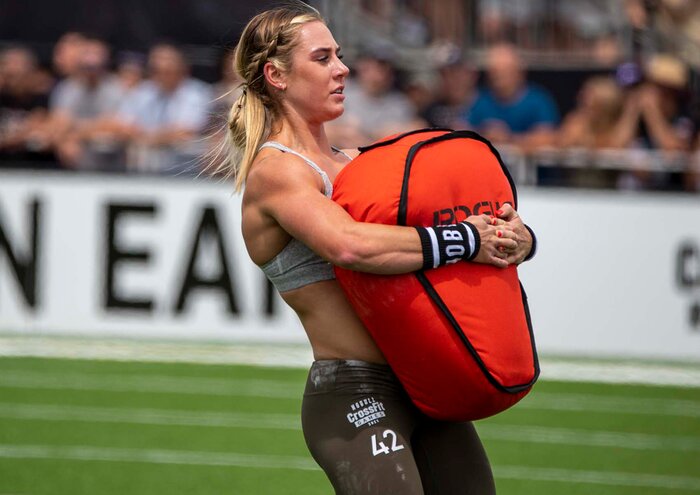The CrossFit Games and Drowning

The CrossFit Games, known for their intense and demanding workouts, have gained immense popularity worldwide. While the athletic challenges are thrilling, they also present inherent risks, particularly when water-based workouts are involved. Drowning, a serious and often fatal consequence of water immersion, is a concern that should not be overlooked in CrossFit settings.
Drowning Risks in CrossFit
Water-based CrossFit workouts, including swimming, submersion, and water-based obstacle courses, can pose significant drowning risks. These risks are amplified by factors such as fatigue, cold water temperatures, and inadequate supervision.
Fatigue
CrossFit workouts are notoriously challenging, pushing athletes to their physical limits. This intense exertion can lead to fatigue, which can impair judgment, coordination, and swimming ability. An exhausted athlete may find it difficult to stay afloat or to call for help if they encounter difficulties in the water.
Cold Water
Cold water can have a profound impact on the body, leading to rapid heat loss and a condition known as cold shock. Cold shock can cause involuntary gasping, muscle cramps, and a decrease in heart rate, making it difficult to swim or stay afloat.
Inadequate Supervision
Proper supervision is crucial in any water-based activity, particularly in CrossFit settings where athletes may be pushing themselves beyond their limits. Inadequate supervision can lead to delays in recognizing and responding to drowning emergencies.
Safety Measures and Best Practices

Water-based CrossFit workouts offer a unique challenge, but safety must be paramount. This section delves into comprehensive safety plans, essential equipment, and specific recommendations for various water-based exercises.
Pre-Workout Assessments and Buddy Systems
A thorough pre-workout assessment is crucial for identifying potential risks and ensuring participants are adequately prepared for the workout. This assessment should include:
* Medical History: Review any existing medical conditions, injuries, or limitations that might affect participation.
* Swimming Ability: Evaluate the participant’s swimming proficiency and comfort level in the water.
* Water Safety Knowledge: Assess their understanding of basic water safety principles and emergency procedures.
Implementing a buddy system is an essential safety measure, especially for open water workouts. Participants should be paired up, and each individual should be aware of their buddy’s location and condition throughout the workout.
Emergency Response Protocols
Having a clear and well-rehearsed emergency response plan is essential in case of accidents or emergencies. This plan should include:
* Designated Emergency Contact: Establish a readily accessible contact person who can initiate emergency procedures.
* Emergency Equipment: Ensure readily available access to life vests, rescue tubes, and first-aid kits.
* Emergency Procedures: Define clear steps for responding to various emergencies, such as drowning, injuries, or medical emergencies.
* Training: Regularly conduct training sessions for participants and staff on emergency procedures, CPR, and first-aid techniques.
Essential Equipment and Resources
Safe water-based CrossFit activities require specific equipment and resources. These include:
* Lifeguards: Certified lifeguards are essential for monitoring the water and responding to emergencies.
* Rescue Gear: Rescue tubes, life vests, and other rescue equipment should be readily available.
* First-Aid Kits: Well-stocked first-aid kits are necessary for treating minor injuries and providing immediate medical attention.
* Communication Devices: Two-way radios or mobile phones should be readily available for communication during emergencies.
* Safety Buoys: Buoys can be used to mark the workout area, warn boaters, and assist in rescue efforts.
Safety Recommendations for Different Water-Based Exercises
| Exercise | Safety Recommendations |
|---|---|
| Swimming |
* Swim within designated areas. * Use a buddy system. * Avoid swimming alone or in areas with strong currents. * Be aware of water conditions and weather changes. * Wear appropriate swimwear and safety equipment. |
| Diving |
* Dive only in designated areas with sufficient depth. * Check the water for obstructions before diving. * Enter the water feet first and avoid headfirst dives. * Never dive alone. * Be aware of the risks associated with diving and potential injuries. |
| Underwater Workouts |
* Use proper breathing techniques and dive training. * Always dive with a buddy. * Use dive flags to mark the workout area. * Be aware of depth limits and decompression requirements. * Avoid underwater workouts in areas with strong currents or poor visibility. |
The Role of Coaching and Athlete Education: Drowning Crossfit Games

The safety of athletes during water-based CrossFit workouts is paramount. This responsibility rests heavily on the shoulders of CrossFit coaches, who must possess a comprehensive understanding of water safety, risk mitigation, and effective communication. They play a crucial role in creating a safe and supportive environment for athletes to challenge themselves and achieve their fitness goals.
Coach Responsibilities in Water Safety
CrossFit coaches are obligated to prioritize the safety of athletes during water-based workouts. This involves conducting thorough risk assessments, ensuring appropriate supervision, and implementing clear communication strategies.
- Risk Assessment: Coaches should conduct a comprehensive assessment of the water environment before each session. This includes evaluating the water depth, currents, water temperature, and potential hazards.
- Supervision: Maintaining constant and attentive supervision of athletes is essential. This ensures that coaches are readily available to respond to any emergencies or provide guidance during exercises.
- Communication: Clear and concise communication is key to safety. Coaches should communicate safety guidelines, exercise instructions, and potential risks to athletes before, during, and after each session.
- Emergency Preparedness: Coaches should be trained in basic life support (BLS) and have access to essential emergency equipment, such as a first-aid kit, life jackets, and a rescue buoy.
Key Safety Points for Athletes, Drowning crossfit games
Coaches should communicate the following safety points to athletes before and during water-based CrossFit sessions:
- Water Depth and Conditions: Athletes should be aware of the water depth, current strength, and any potential hazards.
- Buddy System: Encourage athletes to participate in a buddy system, ensuring that they are always within sight and hearing distance of a partner.
- Physical Limitations: Athletes should be honest about their swimming abilities and any physical limitations that might impact their performance in water.
- Proper Equipment: Athletes should use appropriate equipment, such as life jackets or flotation devices, as needed, and wear comfortable and functional swimwear.
- Hydration and Rest: Remind athletes to stay hydrated and take breaks when needed to prevent fatigue and dehydration.
Essential Skills and Knowledge for Coaches
To effectively supervise water-based CrossFit activities, coaches should possess the following skills and knowledge:
| Skill/Knowledge | Description |
|---|---|
| Water Safety and Rescue Techniques | Understanding water safety principles, rescue techniques, and emergency procedures. |
| First Aid and CPR Certification | Possessing valid certifications in first aid and CPR to respond effectively to emergencies. |
| Swimming Proficiency | Demonstrating strong swimming abilities to effectively guide and assist athletes in the water. |
| Risk Assessment and Management | Conducting thorough risk assessments of the water environment and implementing appropriate mitigation strategies. |
| Communication and Leadership | Communicating clear instructions, safety guidelines, and feedback to athletes in a supportive and encouraging manner. |
Drowning crossfit games – The CrossFit Games are a grueling test of physical and mental endurance, and the pressure to succeed can be overwhelming. The sheer intensity of these competitions can sometimes feel like drowning, a relentless wave of exertion threatening to pull you under.
Lazar Dukic, a CrossFit athlete who has competed at the Games, is a testament to the power of perseverance, his age not a barrier to his success. His journey highlights the determination needed to navigate the turbulent waters of the CrossFit Games and emerge victorious.
Drowning CrossFit Games are a stark reminder of the dangers inherent in high-intensity workouts. While the allure of pushing physical limits is undeniable, the potential for tragedy is always present. A recent case, which explored the link between crossfit death and intense training, highlighted the need for caution and proper safety measures.
In the context of Drowning CrossFit Games, the focus on water-based challenges further intensifies the risks, demanding meticulous planning and a deep understanding of water safety protocols.